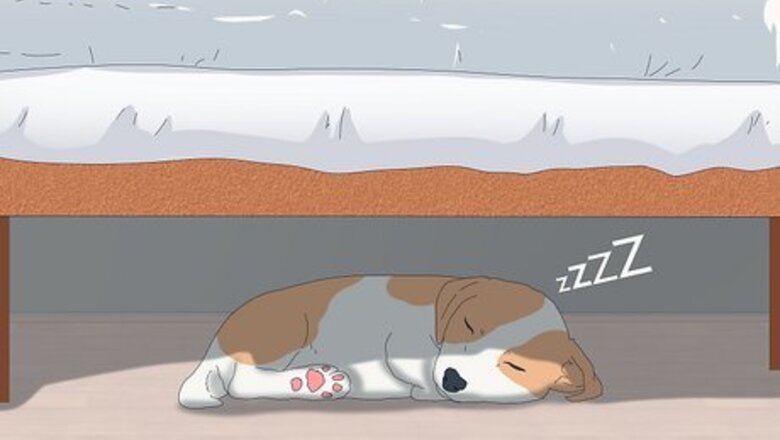
views
Reasons Your Dog Sleeps under Your Bed
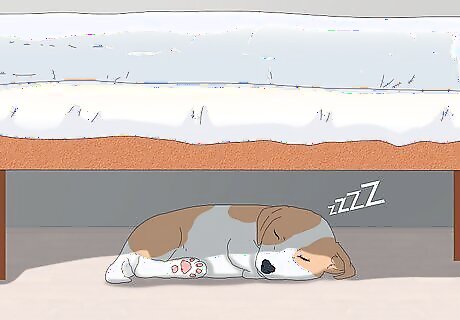
It’s a comfortable den. Canines instinctually seek out enclosed areas where they feel secure. In the wild, they create small dens to sleep and raise their pups. In your dog’s mind, the dark, warm space beneath your bed is an ideal spot to make their den.
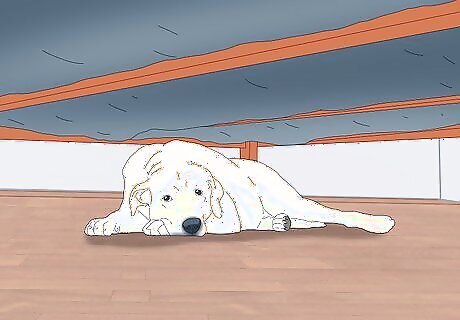
Your pet just needs some space. Like people, dogs occasionally crave downtime. They might be worn out from playing, or in need of peace and quiet. This can be especially true in noisy homes or if they live with young children. Burrowing in their “den” can provide them with a much-needed break from all the hubbub.

They’ve been naughty. Whether or not dogs feel “guilt” is uncertain, but dogs can certainly learn which behaviors get them in trouble. If your dog knows they’ve broken a rule, there’s a chance they’re sleeping under the bed to avoid being found out. Take a peek under the bed and try to make eye contact with your dog. If your pet cowers, flattens their ears, and won’t meet your gaze, you might want to look around the house for evidence of a canine crime.
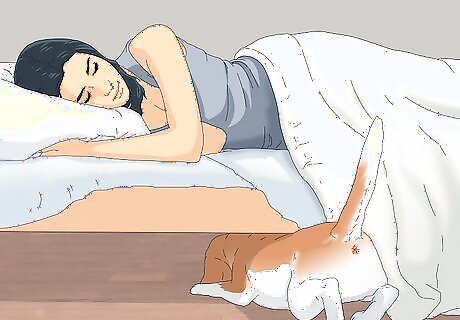
Your dog wants to be close to you. Your scent is comforting, and they feel reassured knowing you’re nearby. Your dog is driven to protect you. If your pet is welcome to sleep in your bed but chooses to sleep underneath it instead, perhaps it’s because they have a better view of their surroundings from the floor. They would also be able to reach an intruder more quickly. Good boy (or girl)!
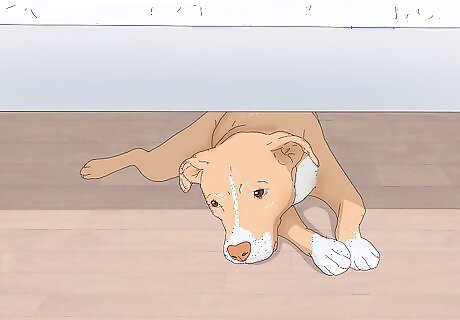
They’re feeling anxious. Animals can be sensitive to changes in their environment. Have you recently rearranged the furniture? Invited houseguests to stay? Are there loud noises such as fireworks? Your pet may be feeling nervous; they need a safe place to hide out. Look for other signs of anxiety in your dog. Symptoms include excessive panting, licking their lips, shying away, loss of appetite, and persistently scanning the room. When an anxious canine is driven from their den, it may either pace restlessly, freeze in place, or immediately try to hide again. If your pup displays symptoms of chronic anxiety, ask your vet for suggestions. Training and/or medication may be able to help.
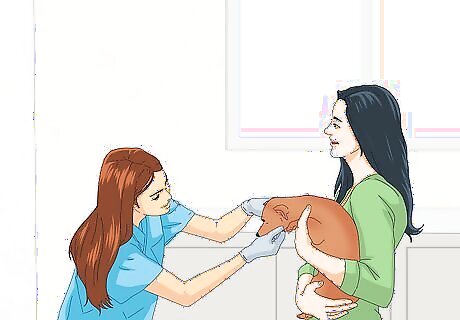
Your pet is sick or hurt. If your dog doesn’t normally sleep under your bed, their atypical behavior might be a sign they’re not feeling well. Canines instinctively seek out safe places to rest while they heal. Examine your pet for signs of injury or illness, and visit a vet if you notice odd behaviors or symptoms. Other indicators that your dog might be sick include: lethargy (laziness), a patchy coat, loss of appetite, vomiting, rubbing their ears, eye discharge, whimpering, and diarrhea.
How can I get my dog to stop sleeping under my bed?
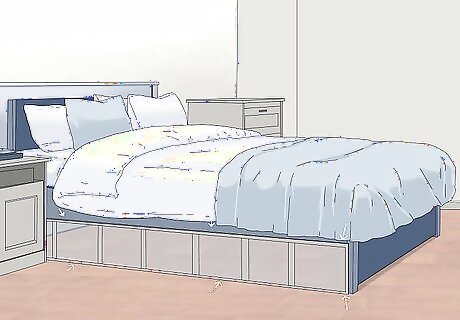
Put up a barrier. Bar your dog’s access to the space with an “under-bed blocker” or “gap bumper.” These products are typically made of PVC and cover the opening between the floor and the bedframe, preventing your furry friend from wriggling underneath. Make your own blocker using a roll of plastic gutter guard mesh and zip ties. Unroll the mesh and fasten it with zip ties to the top and bottom of each bed leg. You can also create an obstacle with other objects, such as packed storage bins. Just make sure they’re too heavy for your dog to slide out of the way.

Reward positive behavior. When you see your dog napping in the correct spot, reward them with a pea-sized treat along with enthusiastic praise. Consistently reward them until they’ve learned not to go under the bed, then gradually reduce the treat frequency while still offering praise. In order to be effective, the reward must happen immediately, otherwise, your dog might not make the connection between their behavior and the treat. Once your dog is regularly sleeping where you want them to, reward them with a treat 4 out of every 5 times they sleep there. Over time, reduce the frequency to 3 out of 5 times and so on, until treats are random and infrequent. Keep praising your dog every time they sleep where you want them to. Your dog will continue the good behavior because they crave your verbal praise (and an occasional treat)!

Crate your pup at night. To crate train your dog, choose a crate large enough for them to stand and turn around in. Add a blanket and place it in a common area, then toss treats inside to encourage exploration (don’t force your dog inside). Leave the crate door open throughout the day. After a few days, place your dog’s meals inside the crate. Close the door while they eat, then open it once they’ve finished. Gradually increase the length of time before opening the door. Next, condition your dog by leaving them in the crate for 10 minutes at a time while you’re in another room. Once your dog has worked up to 30 minutes in the crate without whining, they’re ready to be crated at night. If your puppy is under 6 months of age, only crate them for 3-4 hours at a time. Let your puppy out during the night to relieve themselves.
Where can dogs sleep at night?
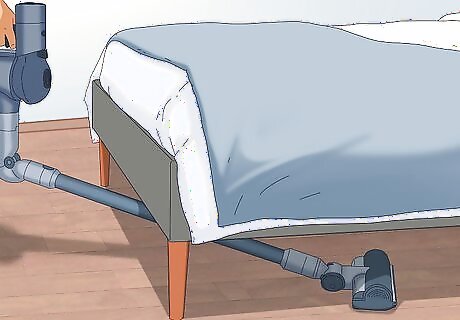
Under the bed If your dog seems content and cozy under there, it’s all right for them to stay. Just be sure to keep the area clean. Vacuum or sweep regularly to prevent the buildup of dust and mites. Brush your dog often to keep hair from collecting beneath the bed.
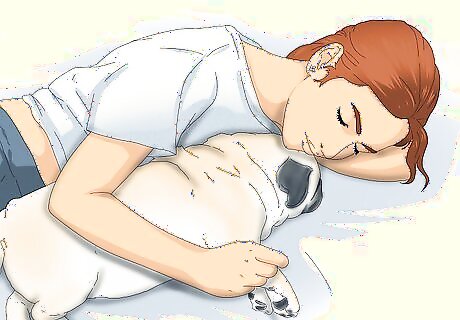
Your bed It’s okay for a well-behaved dog to sleep in your bed. You might not sleep well if your dog is a snoring bed hog, but the comfort of their companionship might make it worthwhile. 45% of dog owners choose to snooze with their pups alongside them at night. Young puppies should sleep in a crate until they’re housebroken. Your dog must also be large enough to avoid injury in case you accidentally roll over while asleep. Make sure your dog can safely get on and off the bed without risking injury. Disease transmission between co-sleeping humans and dogs is rare, so don’t stress about snuggling up.
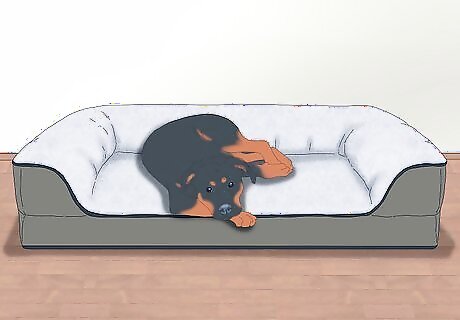
Dog bed Note how your dog likes to sleep before choosing a dog bed. If they sleep curled up, a bed with soft, walled sides will make them feel secure. If they like to sprawl out, choose a large, flat bed. 17% of dogs sleep in dog beds at night.
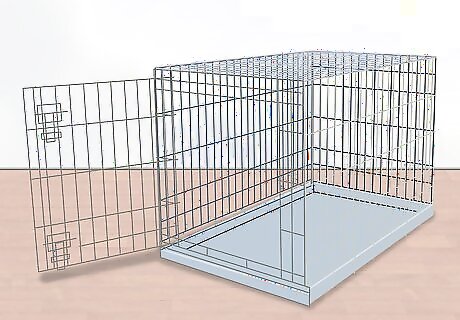
Crate Most experts agree that crate training is beneficial for dogs, and crating your dog at night is fine. If your dog is prone to separation anxiety, place the crate inside your room or in the hallway outside your door. 20% of people crate their dogs at bedtime.
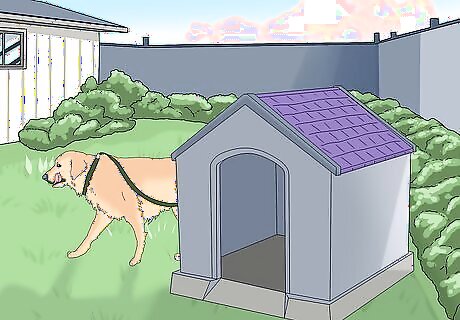
Outdoor shelter In some circumstances, it's okay for your pet to sleep outside in a shelter. A lot of factors come into play, including the breed and age of the dog, weather conditions, security of the area, and the risk of being confronted by other animals. Only 4% of dog owners let their dogs sleep outdoors overnight. Consult with a veterinarian for specific guidelines regarding the needs of your dog. Young puppies and older dogs have a hard time regulating their body temperature, so bring them inside at night. If your dog is sleeping outside, make sure they have access to food and water, as well as protection from the elements. Tethering your dog is dangerous, as they could become tangled in the chain. Instead, provide a fenced area to safely contain them.




















Comments
0 comment